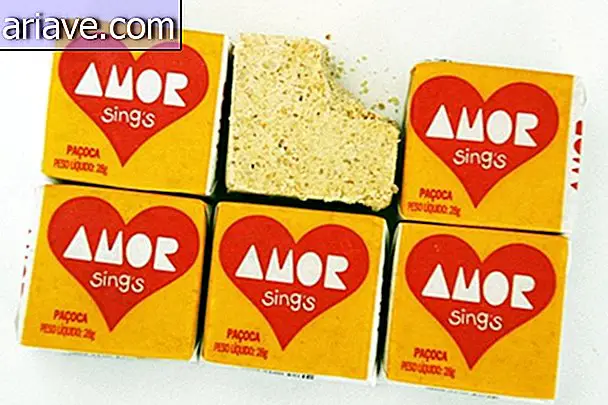13 unbelievable disgusting hygiene practices from the Middle Ages
Over the years, the world is constantly evolving. Humanity is acquiring knowledge, and everything, in some way, ends up influencing the most varied customs and attitudes of societies. In this sense, hygiene is one of the points that has suffered the most transformations from ancient times to today.
In medieval times, for example, the conceptions of cleanliness and manners were totally different. While knowledge and access to information were much more limited, but that does not diminish the fact that the world was much darker in hygiene. On this subject, based on an All Day publication, we present 13 daily practices from the medieval era that could haunt your life.
1. Cutlery? For what?
Most people didn't care about using cutlery. The custom was to eat with hands, which were not even washed before meals. The dishes that served the dishes probably did not go through any cleaning process either. This situation only began to change with the rise of the middle class in Amsterdam in the 18th century.

2. The strange way to bathe
Who doesn't like to take that wonderful shower home after a long day at work? Well, if you are one of those in the medieval period, you might rethink this condition, because even the private bathtubs of homes were used in a communal way. Worse, water was constantly being reused.
Given this, you can imagine why people did not care to practice the so-called "annual bath". Exactly, there was a time when body hygiene only happened once a year.

3. Do the laundry: Huumm ... I don't think so
The laundry was also done once or twice a year, and like the bath, there was a reason why everyone thought twice about doing it. The most commonly used cleaning product was a mixture of river water, urine and caustic soda. As you can imagine, it ended up leaving the garments smelling extremely strong and stinky.
4. Washing your face didn't used to be very pleasant either
Again the urine. It was used in various medicines, but one of the darkest customs of the time was to use the pee to give that beautiful wash on the face. Can you imagine doing this someday?
5. The potty

Yes, if you are investigating, you may still find someone who uses the potty, as bathrooms and toilets are a relatively recent invention. But that doesn't exclude the fact how disgusting these objects are. They used to be under the bed or in one corner of the room, facilitated by the fact that they didn't have to move to the 'house' at night. But think: leave all the "work" done at dawn in such a container and only remove in the morning? God bless the thrones and the discharges!
6. Toilet paper? Don't even count on it
Well, if you saw what bathing and other parts of cleaning were like, you can imagine that this wonder invented by mankind did not yet exist. As some civilizations still practice today, many individuals used their hands to do “dirty work” in medieval times. An exception, no less disgusting, were the Romans, who had communal sponges.
Apart from the limbs and objects divided by the whole family, at the time there was also another alternative to clean the "place where the sun does not hit". Many people used large, soft leaves for this purpose. Now, not everyone always hit the right plants, and this caused many individuals to suffer from allergies and inflammation in that "ungrateful region."

7. The grounds were kept insane
At that time, the main custom was not to sweep the dirt under the carpet. Everything that fell to the ground was there, and in a practice adopted by all social classes, people had a habit of walking on straw. Simply, when the ground got dirty, more straw or other plants were thrown in to hide. The dirt was mingling with everything on the floor, and that naturally created a horrible odor.
8. Beds Housed People and Various Insects
The bedding was extremely dirty. Of course, these places became home to many worms and insects, such as bed bugs and others.
9. Flowers were the deodorants of the time.
Well, today it seems essential that there is a product that keeps the odor pleasant in bathrooms and in the most varied environments, even if there is no constant bad smell. Well, imagine what things were like in the Medieval Era, since almost everything stank from lack of cleanliness and sanitation. Because of this, flowers were used to camouflage the stink of home environments in a difficult-to-understand mix of scents.

10. Hairstyles also used to stink
To be able to make the most varied hairstyles of the time, people often wore wigs prepared with animal fat, which left them with extremely bad odors.
11. Unusual Makeup
Make-ups also brought very unpleasant elements in the Medieval Era. One of the most intriguing items, for example, was the false eyebrows. These accessories were made from hairy rat fur flaps.
12. Leeches were always a "great" medicine
Along with mercury, leeches were the most recommended pharmaceutical medicinal alternatives in the unbelievable Middle Ages. From stomach discomfort to headache, this was almost always the solution.
13. Wounds were healed pleasantly, but not ...
Faced with so much dirt, you can imagine that damage could make a simple cut in any part of the body, right? It was a festival of infections and diseases related to this kind of situation. To avoid greater risks, the medieval solution was to cauterize the wounds with a red-hot iron.

Now, whenever you need to undergo any modern clinical procedure, be very grateful even if you suffer from a little pain. If you had to go through this in the Middle Ages, surely you would "cry blood" and have the worst nightmares!











